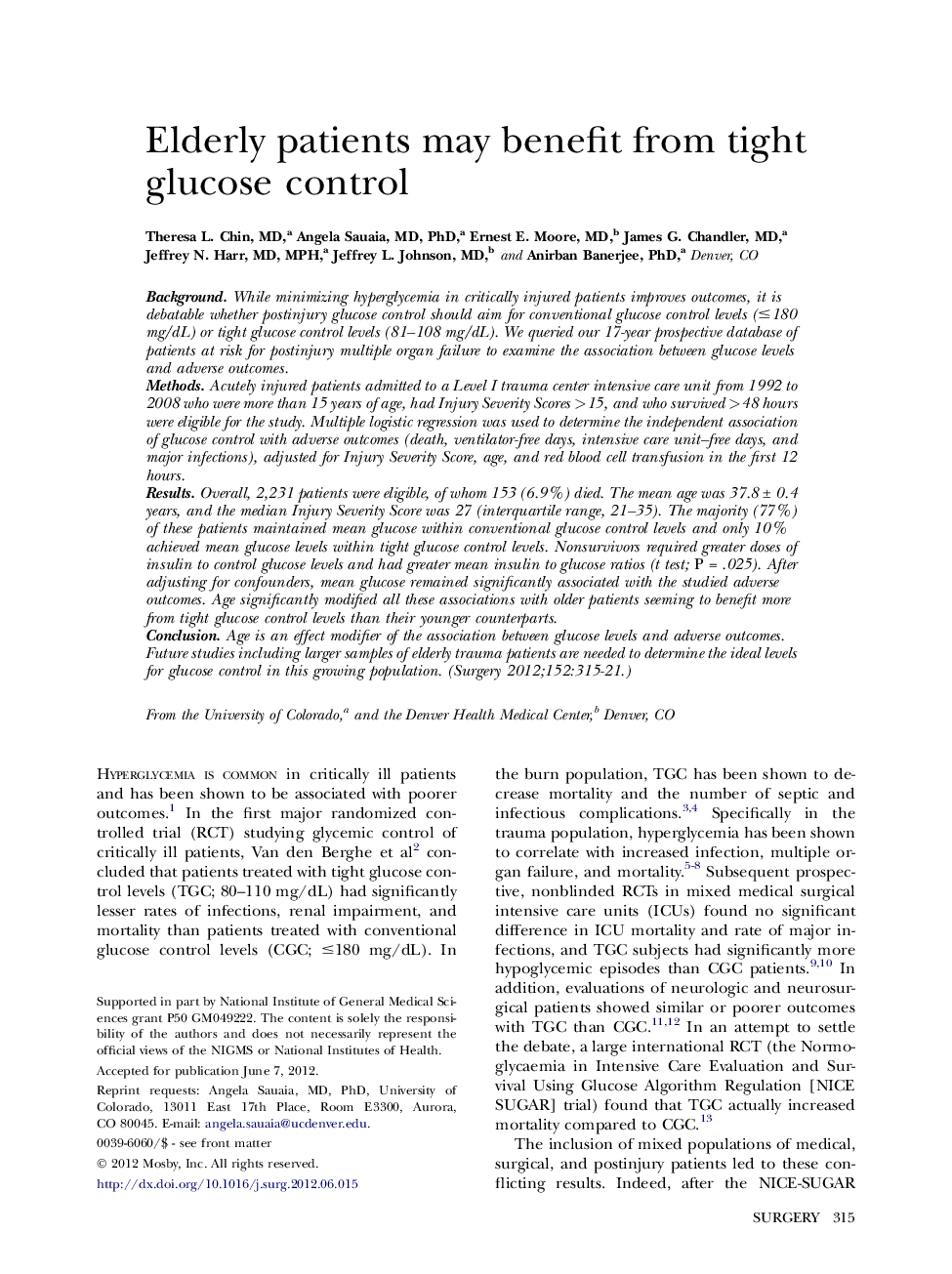| Article ID | Journal | Published Year | Pages | File Type |
|---|---|---|---|---|
| 4308350 | Surgery | 2012 | 7 Pages |
BackgroundWhile minimizing hyperglycemia in critically injured patients improves outcomes, it is debatable whether postinjury glucose control should aim for conventional glucose control levels (≤180 mg/dL) or tight glucose control levels (81–108 mg/dL). We queried our 17-year prospective database of patients at risk for postinjury multiple organ failure to examine the association between glucose levels and adverse outcomes.MethodsAcutely injured patients admitted to a Level I trauma center intensive care unit from 1992 to 2008 who were more than 15 years of age, had Injury Severity Scores >15, and who survived >48 hours were eligible for the study. Multiple logistic regression was used to determine the independent association of glucose control with adverse outcomes (death, ventilator-free days, intensive care unit–free days, and major infections), adjusted for Injury Severity Score, age, and red blood cell transfusion in the first 12 hours.ResultsOverall, 2,231 patients were eligible, of whom 153 (6.9%) died. The mean age was 37.8 ± 0.4 years, and the median Injury Severity Score was 27 (interquartile range, 21–35). The majority (77%) of these patients maintained mean glucose within conventional glucose control levels and only 10% achieved mean glucose levels within tight glucose control levels. Nonsurvivors required greater doses of insulin to control glucose levels and had greater mean insulin to glucose ratios (t test; P = .025). After adjusting for confounders, mean glucose remained significantly associated with the studied adverse outcomes. Age significantly modified all these associations with older patients seeming to benefit more from tight glucose control levels than their younger counterparts.ConclusionAge is an effect modifier of the association between glucose levels and adverse outcomes. Future studies including larger samples of elderly trauma patients are needed to determine the ideal levels for glucose control in this growing population.
